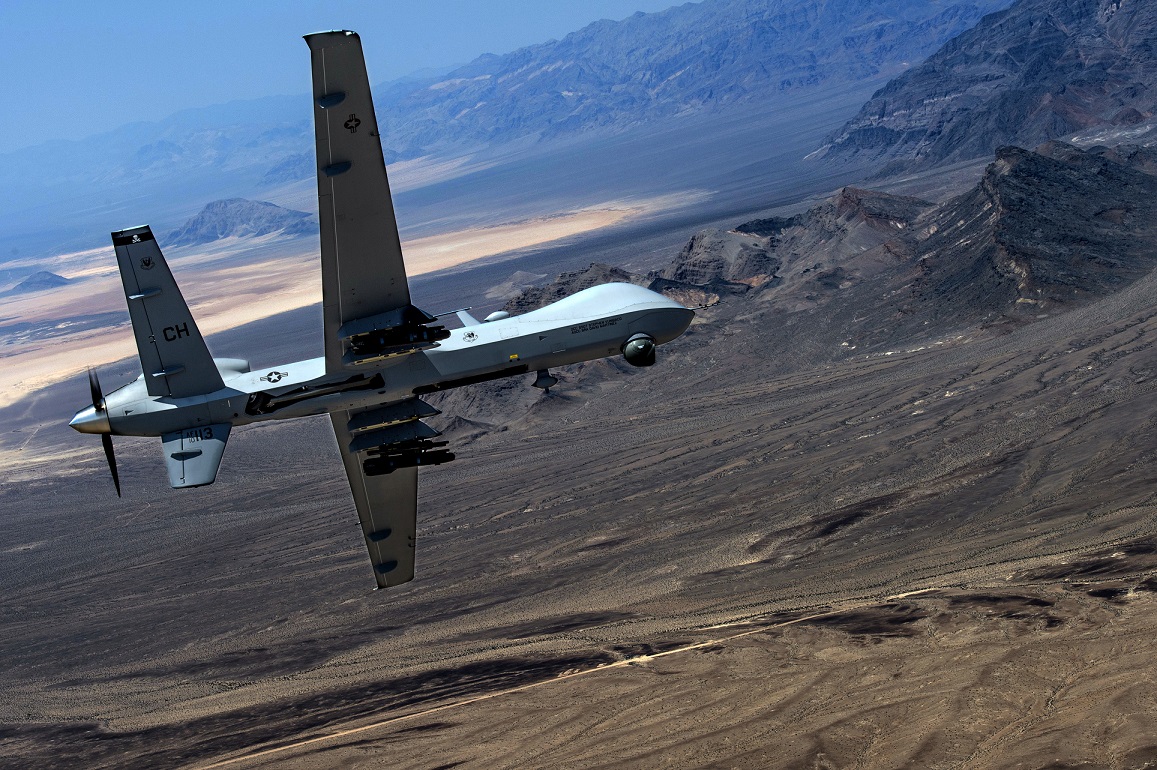
This post is also available in:
 עברית (Hebrew)
עברית (Hebrew)
The US Air Force is searching for its next medium-altitude UAV for intelligence, surveillance and reconnaissance (ISR), as well as air-to-ground strike missions. The Air Force has formally launched its move to replace the General Atomics Aeronautical Systems MQ-9 Reaper beginning in 2030.
As the US pivots towards Great Power rivalries against China and Russia – countries with sophisticated and long-reaching anti-aircraft missile batteries – the MQ-9’s potential is limited, according to the USAF.
The next-generation UAV is expected to integrate certain advanced technologies including autonomy, artificial intelligence, machine learning, digital engineering, open mission systems architecture and attritable technology, the USAF says.
The MQ-9 was given initial operating capability in 2007 and has been used extensively against insurgents and terrorists in the Middle East. Its flight endurance of 27h allows the UAV to loiter above battlefields for long durations. That has made it a favored air-to-ground strike aircraft against combatants who often blend into the surrounding populace and must be picked off at fleeting moments, so as to avoid hurting or killing nearby civilians.
However, the UAV is vulnerable to surface-to-air missiles. The service wants a UAV that embodies what it gets from the MQ-9, but with capabilities to operate in a new era of more advanced threats.
“The hunter-killer mission set provides a unique capability of combined ISR and strike attributes in a single platform fulfilling the highest demand of all air force assets through vast capacity,” says the RFI notice. “With the MQ-9 platform planning for end of service life, a need to identify a solution that continues to provide for this demand is imperative. The purpose of this RFI is to research potential solutions for the Next Generation UAS ISR/Strike platform, the Next Generation Medium Altitude UAS and potential follow-on program to the MQ-9 weapon system.”
According to flightglobal.com, it is not clear if those different aircraft types listed means the USAF is looking to replace the MQ-9 with three separate vehicles.
The service also wants ideas for “alternative ways to support future lower-end, lower-cost ISR missions, which may include initiatives to modernize, augment, and/or replace existing systems”, it says.
The potential program would have three focus areas: future medium-altitude UAV ISR and strike solutions, innovative development business practices, and digital engineering initiatives.
The USAF wants to know about aircraft currently being developed or already developed that can adopt its advanced technology priorities.
It appears the USAF’s next-generation ISR and strike UAV could leverage the Air Force Research Laboratory’s forthcoming Skyborg effort. That is a separate development competition which launched in May 2020 to create an artificially intelligent software for aircraft flight and mission control.

























